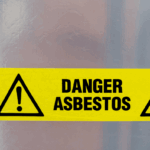Homophobia and Transphobia in the workplace is more common than one would expect. Stonewall UK (a charity which campaigns for the rights of LGBT people) have produced a work report called LGBT in Britain which surveyed 5000 LGBT workers about their experience in work. Statistics from this and other studies show that:
- 1 in 5 LGBT people have experienced verbal bullying from customers, service users, or colleagues because of their sexual orientation in the past 5 years.
- 1 in 8 LGBT people said they would not feel confident reporting homophobic harassment in the workplace.
- A quarter of LGBT people said they have personally experienced poor treatment or bullying from colleagues in the workplace in the past five years due to sexual orientation.
- More than one third of LGBT people have hidden or disguised that they are LGBT at work in the last year because they were afraid of discrimination.
- 2 in 5 Bisexual people are not out to anyone at work about their sexual orientation
- Nearly half of trans people are not living permanently in their preferred gender role, stating they are prevented from doing so because they fear it might threaten their employment status.
- Over 10 percent of Trans people experienced being verbally abused and si
x percent were physically assaulted at work. As a consequence of harassment and bullying, a quarter of trans people will feel obliged to change their jobs - 1 in 8 Lesbian, Gay and Bisexual people would not feel confident reporting any homophobic or biphobic bullying to their employer. 1 in 5 Transgender people would not report transphobic bullying in the workplace.
For more stats visit https://www.stonewall.org.uk/media/lgbt-facts-and-figures.
You can find Stonewall’s work report here: www.stonewall.org.uk
Harassment in the Workplace
Under the Equality Act 2010, harassment is defined as unwanted conduct related to a protected characteristic which has the purpose or effect of violating the victim’s dignity or creating an intimidating, humiliating, offensive, or degrading environment for the victim.
If someone feels they are targeted in the workplace because of any protected characteristics e.g., sexual orientation or gender identity, this can be defined as unlawful harassment.
Unwanted conduct can be anything from physical touching to probing questions about a person’s sexuality or gender identity. Asking a transgender person about any physical changes they may have made to their body, or asking about a homosexual couple’s sex life can also constitute harassment, even if the intention is not to hurt or offend.
That does not mean to say you cannot ask questions in order to learn more about LGBT issues. Many LGBT people will be happy to discuss their sexual orientation or gender identity with you. However the question, the context, and your relationship with the LGBT person are important when determining whether your question is likely to constitute harassment. If you wouldn’t ask a cisgender heterosexual person a similar question in the same circumstances, the likelihood is that it is not appropriate for you to be asking it. If you are not sure, seek permission before asking personal questions about their sexuality or gender identity.
It can also be harassment if you are perceived to be gay, but are not. For example, if rumours are spread speculating about an employee’s sexuality, this could also constitute harassment. Potential forms of harassment can include:
- Excluding someone from social events or activities
- Asking intrusive questions
- Spreading gossiping rumours regarding someone’s gender identity or sexual orientation
- Degrading references to someone’s identity or perceived identity
‘Banter’ – Case Example:
Cindy works in an environment where her colleagues commonly make jokes about her being a transwoman and also about the LGBT community at large. The jokes are made in her presence, and the manager doesn’t challenge the behaviour. The behaviour goes on. The people who work with Cindy hold the view that the jokes are only jokes, and are not meant to really offend Cindy.
The common misconception is that ‘banter’ is not harassment. Whilst it may not be purposefully intended to harass, so long as it has the effect of violating dignity, or creating a humiliating, intimidating, offensive, or degrading environment, then it is likely to constitute harassment.
Sexual Orientation and Gender Identity Discrimination
Sexual orientation and gender identity, just like age or race, are considered protected characteristics. It is therefore against the law to treat someone less favourably due to their sexual orientation or gender identity. There are several different types of discrimination:
- Direct Discrimination: treating someone less favourably due to a protected characteristic, e.g. denying a promotion
- Indirect Discrimination: if work policies disadvantage certain people, e.g. employee benefits which only benefit same sex couples
- Harassment: unwanted conduct, which could include nicknames, gossiping, bullying
- Victimisation: detrimental treatment to those who have already complained about discrimination or harassment.
How to Prevent Sexual Orientation and Gender Identity Discrimination at Work
Although is it already against the law to discriminate on the basis of sexuality and gender identity, companies and firms must ensure they actively support LGBT workers, in order to secure a positive and happy workforce.
Creating an equality and diversity policy which addresses what is considered to be unacceptable behaviour and what the consequences are for such behaviour is a must to be able to adequately manage and discipline any misconduct and harassment by staff. An equality policy should also detail what happens when discrimination is reported in order to encourage more LGBT workers to report any discrimination they have encountered.
Training your staff spreads greater awareness of LGBT issues and helps prevent discrimination. Training ensures that all members of staff understand their individual responsibilities and roles. Having adequate training on discrimination will alleviate the likeliness of claims, complaints, and disciplinary action, and also enhances the business reputation.
Supporting visible LGBT role models and creating networking groups within companies for LGBT people can provide peer-to-peer support for LGBT employees, raise awareness of LGBT issues amongst non-LGBT staff and can help ensure that LGBT inclusion is embedded across the organisation.
Discrimination in recruitment
You do not have to be an employee to be discriminated against. Almost 1 in 5 LGBT people who were looking for work said they were discriminated against because of their sexual orientation or gender identity whilst looking for work. When advertising roles, it is vital not to indirectly discriminate against LGBT candidates. Make sure the job application only asks for relevant information to the job vacancy, and doesn’t ask intrusive questions.
If you require any more information regarding employment advice, call or email to arrange a free initial one to one consultation. We can be contacted on 0113 284 5000 or alternatively newbusinessenquiries@isonharrison.co.uk.

















